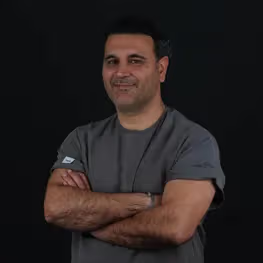Xenograft tissue refers to the transplantation of living tissue from one species to another. It is a type of tissue grafting that has been used for a variety of medical procedures, including skin grafting, heart valve replacement, and bone grafting.
One of the key benefits of xenograft tissue is that it provides a readily available source of tissue for patients who are in need of a transplant but do not have a suitable donor. Xenograft tissue is used to replace tissue that has been lost or damaged due to injury or disease.
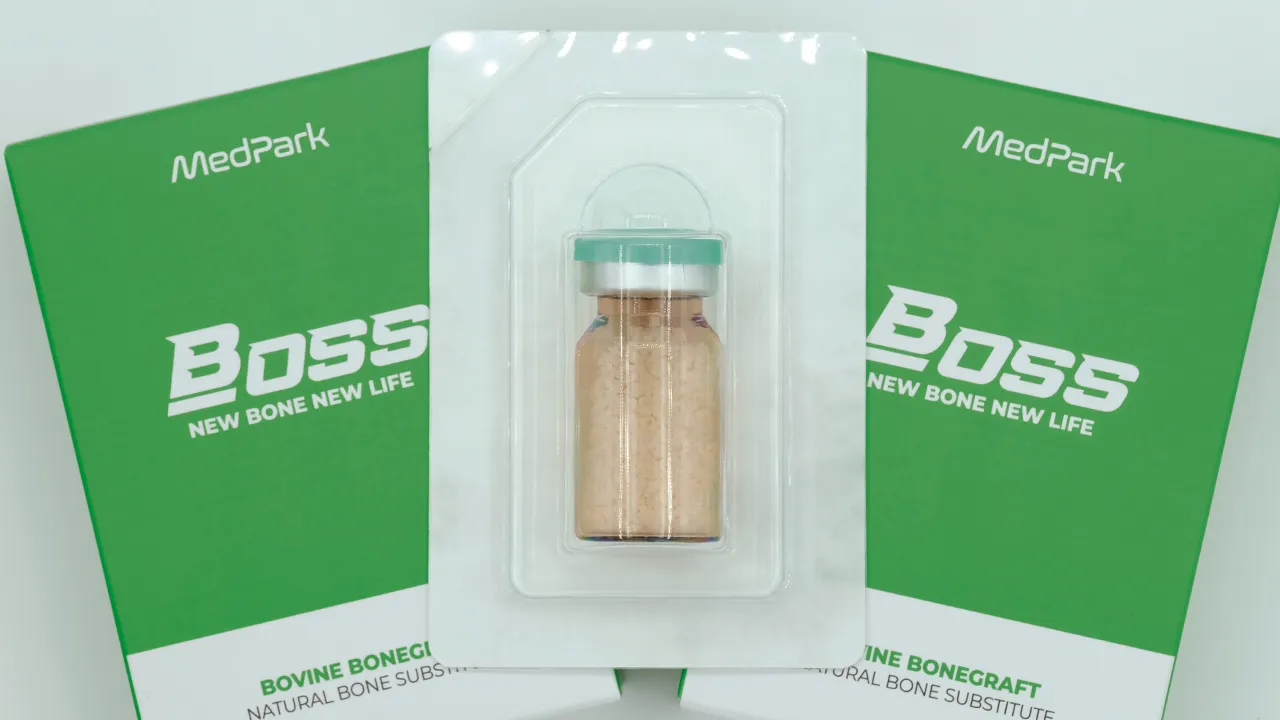 The denture risk factors of xenograft tissue come with some drawbacks, including the risk of rejection and infection. It leads to a longer recovery period and higher costs associated with the transplantation.
The denture risk factors of xenograft tissue come with some drawbacks, including the risk of rejection and infection. It leads to a longer recovery period and higher costs associated with the transplantation.
The denture cost of xenograft tissue transplantation varies depending on a variety of factors, such as the type of tissue being transplanted, the extent of the procedure, and the geographic location of the treatment facility. It is important to note that dentures are another option for individuals seeking to replace missing or damaged teeth. Denture definition refers to removable appliances used to replace missing teeth and is made from a variety of materials
Denture recovery duration varies depending on the type and extent of the tissue transplantation, as well as the patient's overall health and medical history. Patients need to undergo additional treatments or follow-up appointments to ensure that the transplant is successful and that there are no complications.
Type of Xenograft Tissue Procedure | Description | Price Range (£) |
Single Area Xenograft | Cost of grafting xenograft tissue in a single area. | £120 - £797 |
Larger Area Xenograft | Cost for more extensive grafting requiring larger material quantities. | £800 - £1200 |
Complex Xenograft Procedure | More complicated procedures requiring specialized expertise and time. | £1200 - £2000+ |
What is Xenograft Tissue in Dentistry?
A xenograft's definition first is that it is living tissue that has been transplanted from one species to another. It is a dental implant technique that has been applied in a number of medical specialities, including dentistry. Xenograft tissue is utilized in dental implant treatments to replace lost or broken teeth.
The use of xenograft tissue in dental implants is crucial because it gives patients who lack a qualified donor for a conventional dental implant an alternate choice. Dental implants are supported by xenograft tissue, resulting in a strong and long-lasting repair.
Dental implants use xenograft tissue to encourage bone growth and repair. The xenograft tissue serves as a scaffold on which the patient's own bone cells develop and adhere, resulting in a solid base for the dental implant. Patients who have lost a jawbone due to an accident, illness, or other causes find the method to be especially helpful.
Patients looking to replace missing or damaged teeth find a good choice in the use of xenograft tissue in dental implants. It encourages bone development and regeneration while enabling a natural-looking and useful repair.
What materials are used in Xenografts Tissue Dentistry?
Dental xenograft tissue is created from a variety of substances, including porcine (pig) collagen, demineralized bone matrix, and bovine (cow) bone. These substances offer a scaffold for the patient's own bone cells to develop and renew, resulting in a sturdy base for the dental implant.
Bovine bone is one of the most used materials for xenograft tissue in dentistry. It is the perfect substance for aiding the development of new bone since it has a porous structure that closely resembles that of human bone. Dental professionals frequently choose bovine bone since it is easily available and reasonably priced.
Another substance utilized in xenografts tissue in dentistry is porcine collagen. Porcine collagen is frequently employed as a scaffold for bone cells to develop and regenerate. Collagen is an animal connective tissue protein. Porcine collagen is a safe and reliable material for use in dental implant operations since it has been demonstrated to have great biocompatibility with human tissue.
A third component of xenograft tissue utilized in dentistry is a demineralized bone matrix. Collagen and other proteins are extracted from processed human or animal bone, which has had minerals like calcium removed. The new bone growth is expected to be supported by the matrix, encouraging bone regeneration and fortifying the jaw.
The xenograft tissue materials used in dentistry are selected depending on the particular requirements of the patient and the surgery being carried out. Each material has benefits and drawbacks, and a dental professional provides assistance when choosing the one that is most appropriate for specific circumstances.
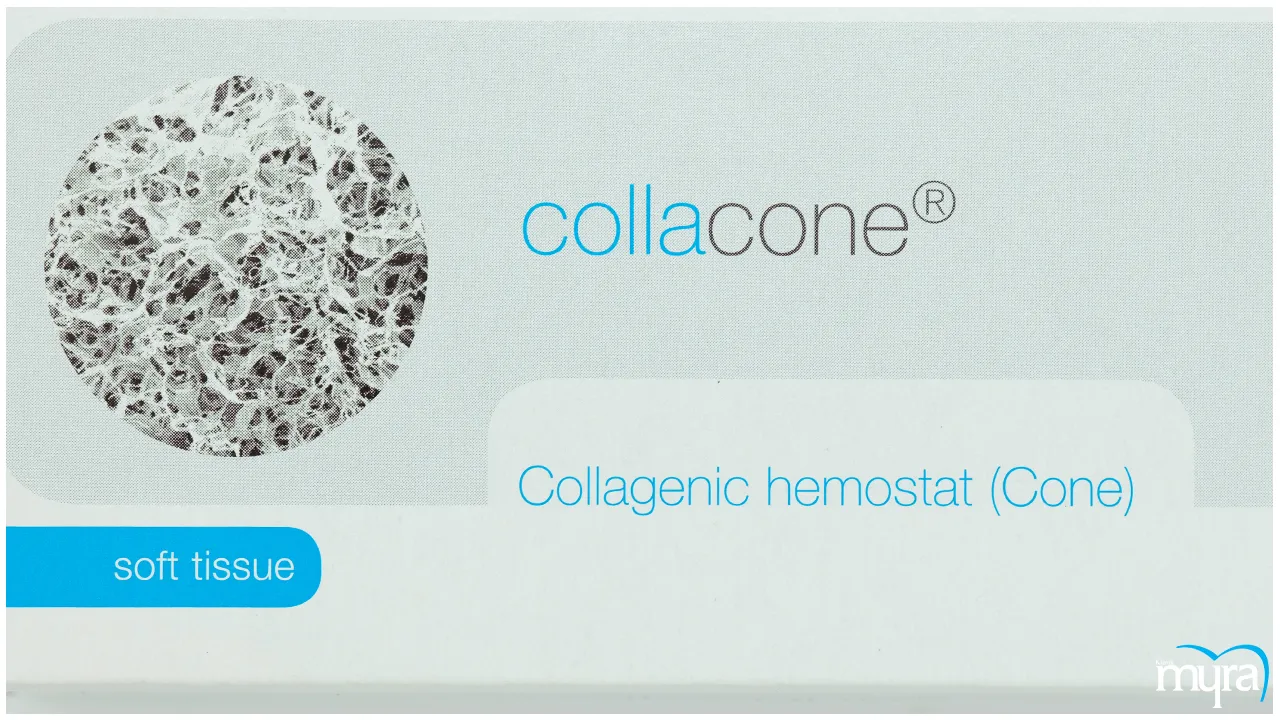
When is a Xenograft Tissue needed in Dentist?
Xenograft tissue is a versatile procedure used in dentistry for a variety of conditions based on the demands of the patient. There are times that it is being used for badly burned or injured and is lacking large areas of skin. The replacement of missing or damaged teeth during dental implant operations is one of the most frequent uses of xenograft tissue by dental professionals.
The patient's own bone cells develop and renew on the scaffold provided by the xenograft tissue, giving the dental implant a sturdy base. It is used to encourage bone growth and regeneration in the jaw, which is very helpful for individuals who have lost bone due to illness, trauma, or other causes.
Xenograft tissue is used to repair bone abnormalities in the jaw, restore the shape and structure of the jawbone, and supplement existing bone in the jaw, providing a firmer foundation for dental implants or other restorations. Using xenograft tissue has a number of benefits compared to other grafting materials, it is easily available, reasonably priced, and simple to use. It has been demonstrated to have a high rate of success and a minimal risk of complications.
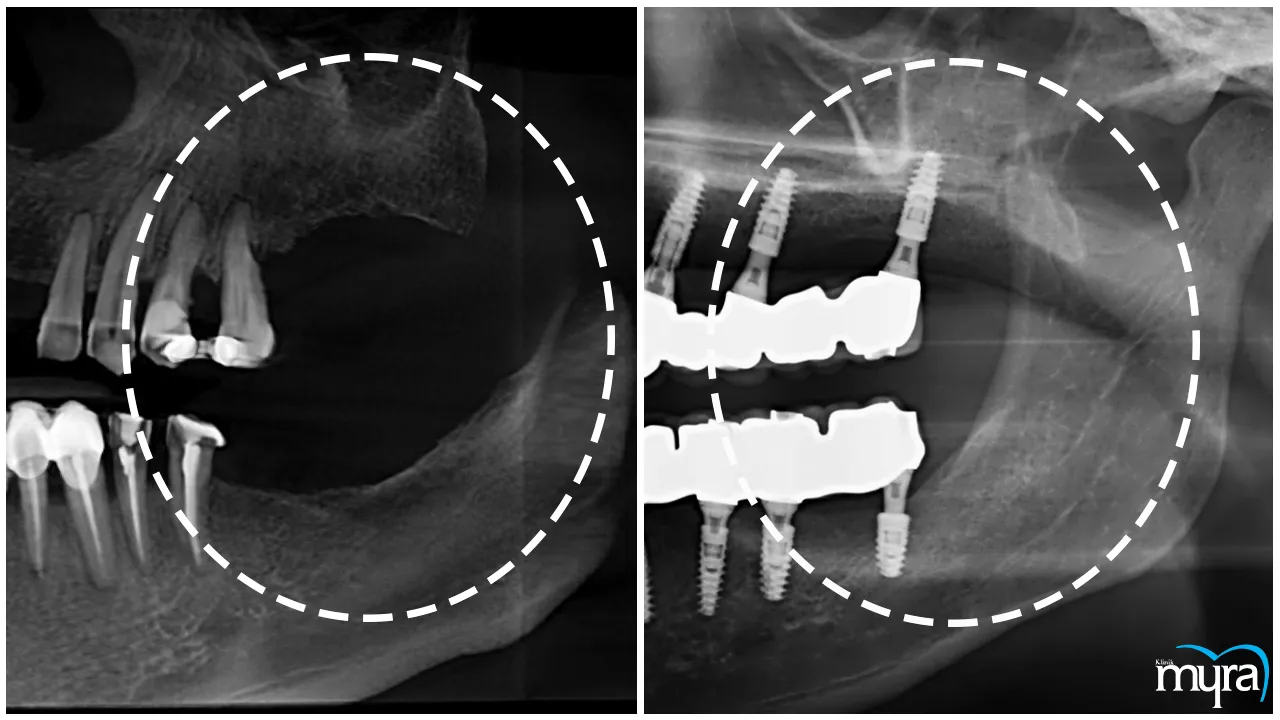
What are the benefit of Xenograft Tissue?
Below is the list of Benefits of Xenograft Tissue.
- Readily Available: Xenograft tissue is easily obtained from animal sources such as cows, pigs, or sheep, making it a readily available material for dental procedures. The availability of xenograft tissue is essential for procedures such as dental implant placement, bone augmentation, and bone regeneration, where a large amount of grafting material is required.
- Biocompatibility: Xenograft tissue has been shown to be biocompatible with human tissue, meaning that it does not trigger an immune response or other adverse reactions. The compatibility of xenograft tissue with human tissue is crucial for dental implant procedures. The grafting material must integrate with the patient's own bone tissue to create a strong foundation for the dental implant.
- Low Risk of Infection: Xenograft tissue used in dentistry is thoroughly processed and sterilized to remove any potential for infection. The sterilization process ensures that the grafting material is free of bacteria, viruses, or other contaminants that cause post-operative complications or infections.
- Promotes Bone Growth: Xenograft tissue acts as a scaffold for the patient's own bone cells to grow and regenerate, promoting bone growth and regeneration in the jaw. The use of xenograft tissue helps stimulate the formation of new bone tissue, resulting in a strong and stable foundation for dental implants or other restorations.
- High Success Rate: Xenograft tissue has been shown to have a high success rate in dental procedures, with low complication rates and excellent long-term results. The high success rate of xenograft tissue in dental procedures makes it an ideal choice for patients seeking dental implants, bone regeneration, or bone augmentation.
- Affordable: Xenograft tissue is a cost-effective alternative to other grafting materials, such as autografts or allografts, which are more expensive and require additional procedures for harvesting or processing. The affordability of xenograft tissue makes it an excellent choice for patients seeking dental implant procedures or other restorations.
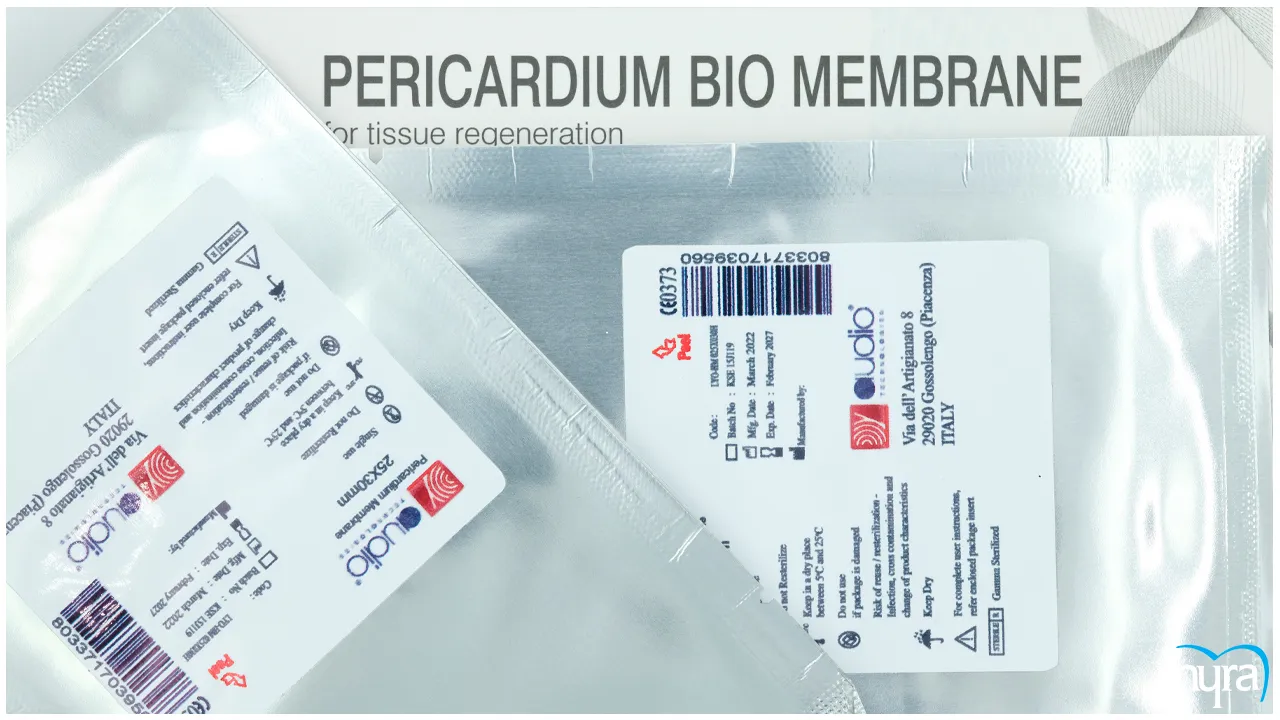
What are the risk of Xenograft Tissue?
Below is the list of risks of Xenograft Tissue.
- Risk of Disease Transmission: There is still a risk of disease transmission from the animal source, even though xenograft tissue is processed and sterilized before use. The risk of disease transmission is going to be minimized by careful screening of donor animals and thorough processing and sterilization of the grafting material.
- Allergic Reactions: Some patients are allergic to the proteins found in xenograft tissue. Allergic reactions cause swelling, redness, and pain at the graft site. Allergic reactions to xenograft tissue are rare, but there is a way to minimize them by performing allergy testing before the procedure.
- Graft Failure: Failure of the graft occurs in some circumstances when the xenograft tissue does not successfully meld with the patient's own bone tissue. Graft failure occurs due to poor graft quality, improper placement, or underlying medical conditions that impair bone healing.
- Infection: There is still a risk of infection at the graft site, although the risk of infection is low with xenograft tissue. Infections occur due to poor oral hygiene, poor wound care, or the presence of underlying medical conditions.
- Rejection: The patient's immune system recognizes the xenograft tissue as foreign and mounts an immune response, leading to the rejection of the grafting material. Rejection occurs in patients with a weakened immune system or those who have previously undergone organ transplantation.
What are the procedures of Xenograft Tissue in Dentistry?
The dental professional must decide on where to get the tooth to use in the dental implant treatment before doing a xenograft tissue surgery. The patient's natural tooth is expected to be extracted or replaced with a dental prosthetic in order to make room for the implant.
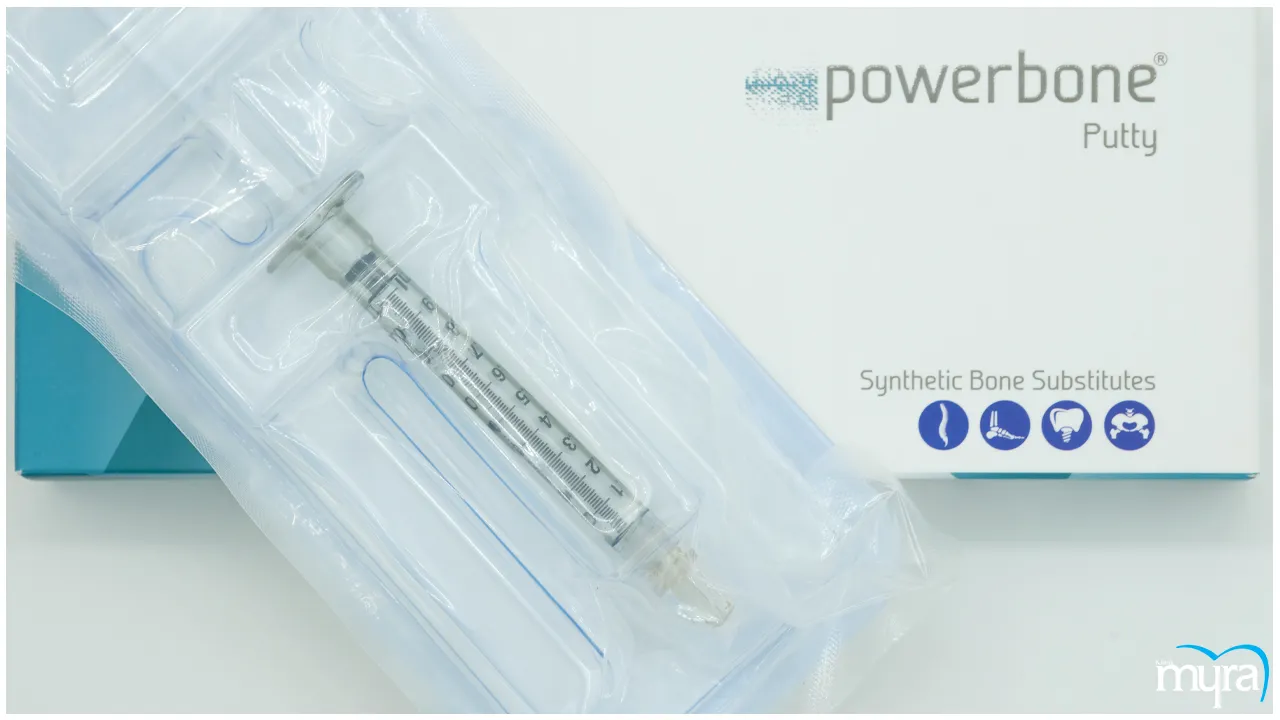 The dental provider carefully analyzes the patient's oral health and entire medical history to decide whether they are a good candidate for dental implant surgery. A thorough dental impression needs to be taken in order to mold the patient's mouth and establish the implant's shape and size.
The dental provider carefully analyzes the patient's oral health and entire medical history to decide whether they are a good candidate for dental implant surgery. A thorough dental impression needs to be taken in order to mold the patient's mouth and establish the implant's shape and size.
The patient is going to be made ready for surgery once the dental professional has decided where the missing tooth comes from. Local anaesthetic is used to numb the region around the surgical site, and antibiotics are being prescribed to avoid infection.
The dental professional carefully inserts the xenograft tissue into the area where the tooth is going to be put during the procedure. They are going to gently place the dental implant into the area, making sure it is stable and properly aligned.
The patient receives comprehensive instructions on how to take care of the surgical site and the dental implant after the procedure. It entails abstaining from particular meals or activities and maintaining stringent mouth hygiene practices.
The dental clinician must carefully analyze the patient's oral health and establish where the tooth comes from for dental implant treatment prior to doing xenograft tissue surgery. It guarantees a dental implant that offers a functional and natural-looking tooth replacement and is successful and long-lasting.
How much does a Xenograft Tissue Cost?
Dental xenograft tissue surgery costs vary widely based on a number of variables. Xenograft tissue operations are typically less expensive than those involving autografts or allografts. Patients need to become aware of the variables that affect the procedure's overall cost because the cost is still substantial. The average cost of a procedure using xenograft tissue range from £120 to £797 in a single area in Turkey.
The kind and quantity of materials needed are one of the main variables that impact how much a xenograft tissue surgery costs. The source of the xenograft tissue and the amount of processing necessary to sterilize and prepare the grafting material for usage affect the cost of the grafting material.
The body portion being operated on during a xenograft tissue surgery is another variable that impacts cost. Greater quantities of materials and time are needed for procedures requiring larger body parts or more extensive grafting, which result in a higher cost.
The cost of a xenograft tissue surgery varies depending on how complicated the treatment is. The patient is needed to pay more for more complicated operations because they need more time and training.
The use of xenograft tissue or the expense of dental implant operations is frequently not covered by dental insurance plans, which is crucial to remember. Patients need to inquire with their dental insurance provider to see if these procedures are covered.
The total cost of a xenograft tissue surgery in dentistry varies based on a number of factors, including the materials required, the body component involved in the procedure, and the complexity of the procedure. Patients need to talk to their dentist about the expense of the treatment and weigh the potential advantages of using xenograft tissue for their particular dental requirements.
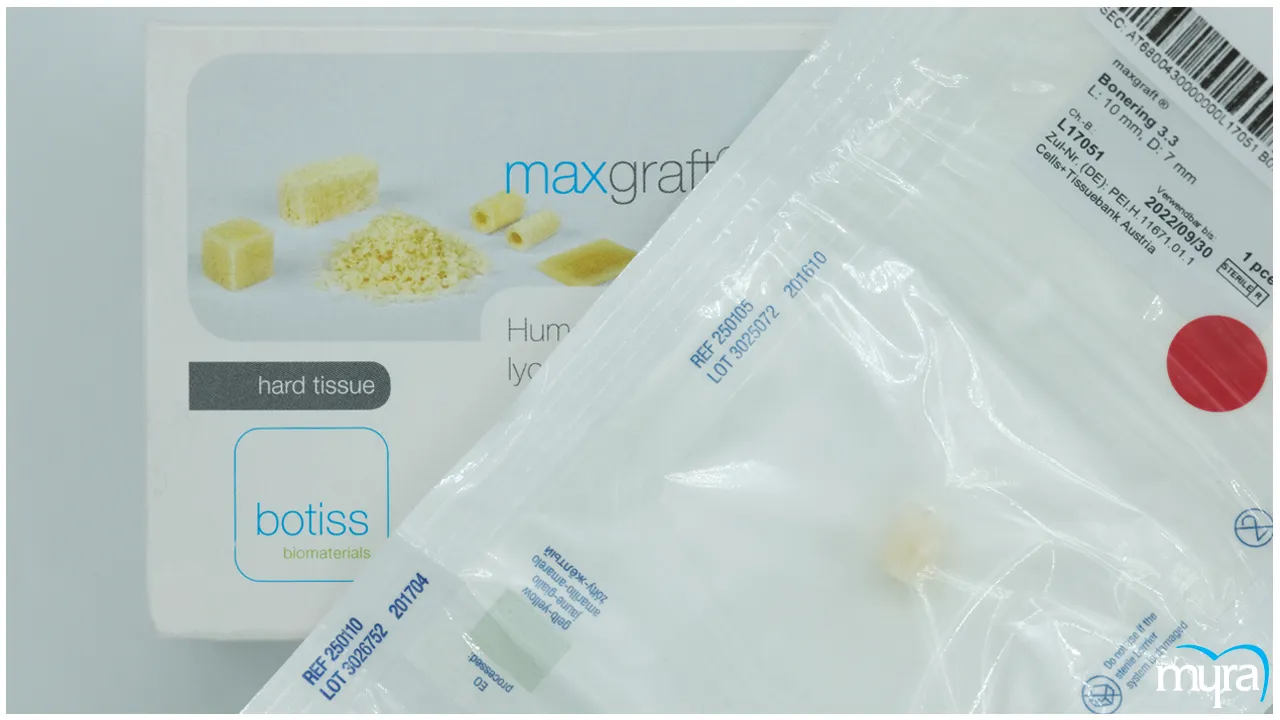
How long does it take to Recover from Xenograft Tissue?
Dental xenograft tissue procedures have a variety of recovery times that depend on the complexity of the treatment, the patient's general health, and their medical background. The typical recuperation time for individuals after surgery takes 4 months in the majority of cases.
Patients are expected to suffer some swelling, bruising, and soreness at the surgical site during the first several days after the treatment. These symptoms are manageable with the use of painkillers and cold compresses.
Patients need to follow a stringent oral hygiene routine after the treatment, which includes not brushing or flossing the surgical region and using a specialist mouthwash as prescribed by their dental physician.
Patients need to continue to check the surgical site for any indications of infection or other complications in the weeks after the treatment. They need to abide by any further recommendations given by their dental practitioner, such as abstaining from specific foods or engaging in activities that impede the healing process.
The length of recuperation following a xenograft tissue operation varies based on the particular demands of the patient and the complexity of the procedure. Patients need to discuss their projected recovery time with their dental provider and carefully follow their post-operative instructions to ensure a successful and fast recovery.
Visual references can greatly assist patients during recovery from a xenograft tissue procedure. Reviewing images that document the healing process, from initial swelling and bruising to full bone integration, helps patients set realistic expectations. Additionally, these visual resources enable individuals to recognize typical healing patterns and quickly identify signs of complications. Many patients find reassurance in comparing their progress with professional bone graft healing photos.
How long do Xenograft Tissue last?
The lifetime of xenograft tissue in dentistry varies based on various aspects, including the location of the grafting site, the extent of the grafting, the quality of the grafting materials, the patient's overall health, and the individual healing process.
Xenograft tissue is predicted to provide a long-lasting basis for dental implants and other operations in general. The grafting material supports the implant and encourages long-term bone growth once it has assimilated with the patient's own bone.
Studies have demonstrated that, depending on the particulars of the patient, xenograft tissue maintains its stability for up to 10 years or more. The stability of xenograft tissue used in sinus augmentation treatments, for instance, was documented in a national library of medicine provided evidence of deproteinized bovine bone particles not biodegraded after 10 years.
It is crucial to remember that a variety of individual circumstances affect a xenograft tissue procedure's success and durability. Patients need to maintain good oral hygiene, get routine dental checkups, and adhere to any post-operative recommendations given by their dental professional to ensure the effectiveness of their grafting treatment.
Xenograft tissue gives dental implants and other dental operations a durable and reliable base. Patients must speak with their dental provider about their specific instance to learn the anticipated longevity of their xenograft tissue surgery.
What are the side effect of Xenograft Tissue Surgery?
- Rejection: This side effect occurs when the body's immune system recognizes the grafting material as foreign and mounts an immune response against it.
- Infection: Bacteria entering the surgical site can lead to inflammation and potential bone loss.
- Bleeding: Excessive bleeding at the surgical site can occur during or after the procedure.
- Swelling: Inflammation and swelling at the surgical site may occur as a result of the body's response to the procedure.
- Pain: Discomfort or pain at the surgical site is a common side effect.
- Numbness or Tingling: Loss of sensation or abnormal sensations in the surrounding area can occur as a result of nerve damage during the procedure.
- Bone Loss: Resorption or loss of bone at the surgical site can be a potential side effect.
Each of these side effects can have specific preventive measures, treatment options, and potential long-term implications that should be considered during dental grafting procedures.
Is Xenograft Tissue operation painful?
Yes, xenograft tissue surgery is painful
The medical method known as xenograft tissue surgery entails making incisions and manipulating tissue in the mouth. It involves the transplantation of living tissue from one species to another. It is typical for individuals to feel some discomfort or pain afterwards, while the surgical site is normally numbed with local anaesthetic during the treatment
A patient's pain level depends on various aspects, including the extent of the grafting process, the quality of the grafting material, their pain tolerance, and their health. Some people are going to feel a little sore or achy, others experienced more intense pain or swelling.
Patients are given painkillers by prescription or encouraged to take over-the-counter painkillers such as acetaminophen or ibuprofen to ease pain following xenograft tissue surgery. They are expected to be instructed to apply ice or a cold compress to the surgery site to decrease swelling and discomfort.
Patients must feel free to voice any apprehensions they sometimes have concerning pain management to their dentist before undergoing any dental work. Dental professionals explain what to anticipate during the healing process and give techniques for coping with pain and discomfort.
Is a xenograft permanent treatment?
No, xenograft tissue surgery is not a permanent treatment. Xenografts are a form of bone grafting material that provides a long-lasting repair for patients who have lost jaw bone due to injury, disease, or other causes. Xenografts are not regarded as a permanent treatment.
The stability of the dental implant or other restorative procedure is jeopardized if the body slowly reabsorbs the xenograft material over time. The quality of the grafting material, the degree of bone loss, the patient's general health, and compliance with post-operative instructions are some of the variables that affect how long a xenograft lasts.
Xenograft tissue surgery results in many years of sustained bone growth and regeneration, despite the fact that it is not a permanent cure. Patients profit from successful xenograft tissue surgery for a long time with the right maintenance and follow-up care.
Patients need to consult their dentist about the longevity of a xenograft before deciding to undertake the treatment. Dental professionals must advise patients on xenograft lifetime and follow-up care to ensure the long-term effectiveness of their dental implant or other restoration therapy.
Is Xenograft Tissue the same as Dental Bone Graft?
No, Xenograft Tissue is not the same as Dental Bone Graft. Dental operations use both Xenograft Tissue and Dental Bone Grafts; however, these two are not interchangeable.
Xenograft Tissue is a bone graft material sourced from animals, usually from cows or pigs, that has been treated and sanitized for use in dental treatments. The tissue is applied to the jawbone to fill in any openings or cavities in order to provide support for dental implants or encourage bone regrowth.
Dental Bone Grafts, on the other hand, involve removing bone material from the person's own body, commonly from the hip or the chin, and transplanting it to the jawbone to repair damaged bone or support dental implants. Autografts, or bone grafts derived from the person's own body, are considered to be the benchmark in bone grafting since they have a smaller probability to be rejected or infected than other forms of transplants.
The two grafts--Xenograft Tissue and Dental Bone Graft--have each their own positive and negative attributes. Xenograft Tissue utilizes animal tissue while dental bone graft makes use of the person’s own tissue.
Dental operations use both Xenograft Tissue and Dental Bone Graft but then again, they are not the same nor interchangeable. Xenograft Tissue sources graft from animals while Dental Bone Graft uses the person's own tissue.
Listed below are the primary differences between the two grafting techniques.
- Provider of Material: The key difference between dental bone grafts and xenograft tissue is where the items being used originate from. Dental Bone Grafts rely on the patient's own bone tissue, as compared with Xenograft tissue, which is usually derived from cow or pig tissue.
- Biocompatibility: Autografts, or bone grafts from the individual's own body, are considered to be the benchmark in bone grafting mainly because they are far less probable to be rejected or contaminated than allografts or xenografts. Dental bone grafts have a higher degree of biological compatibility because they are produced using the patient's own tissue.
- Risk of Disease Transmission: There is a chance that the patient is going to contract an illness from the animal that provided the xenograft tissue. The risk is deemed relatively low, nevertheless, owing to the meticulous pretreatment and sterilization that the tissue goes through before use. Dental Bone Grafts do not pose the risk because the tissue is obtained from the patient's own body.
- Cost: Xenograft tissue is sourced from animals, it does not require a further surgical operation in order to harvest the tissue. It is typically a cheaper option than dental bone grafts.
- Availability: Dental Bone Grafts are not feasible in every scenario given that the patient’s circumstance does not have enough bone tissue to harvest. The tissue used in xenografts is conveniently available and be utilized in a wide range of conditions.
Can xenografting be used to treat excessive gingival display in patients with a gummy smile?
No, gummy smile patients with the extensive gingival display are not frequently addressed with xenografting.
The most common procedures for correcting excessive gingival display, commonly referred to as a gummy smile, vary between orthodontic treatment, lip repositioning surgery, Botox injections, and crown lengthening. Xenografting is an approach that is utilized in bone grafting procedures to aid in the patient's own bone tissue regeneration. It is a kind of operation that is not usually carried out for gingival tissue for the reason gingival tissue regeneration is not typically needed. The use of xenografting to treat a gummy smile is currently not supported by scientific research. Xenografting has been utilized successfully in bone grafting techniques, however, it is not a method frequently employed to treat gingival tissue.
The best course of action for every particular instance of extreme gingival display is to discuss it with a certified dental professional. Dental specialists and professionals offer an extensive evaluation and prescribe the most effective plan of action in considering the specific needs as well as goals of the patient.
How can xenografting be used to improve the fit and stability of dentures?
Xenografting is sometimes performed in order to enhance the fitting and durability of dentures through the addition of bone tissue to the patient's jaw in areas where bone loss has occurred. It is possible for the jawbone to begin to resorb or shrink when teeth are lost or taken out, which leads to a decrease in both the density and volume of the jawbone. It is prone to the dentures failing to fit correctly, which is capable of leading to discomfort, slippage, and difficulties eating and speaking. One of the main areas of focus for a prosthodontist is the creation and fitting of dentures. What is denture? A denture is a removable appliance that is used to replace missing teeth and surrounding tissues.
Xenografting is the use of bone graft material from an animal, commonly a cow or a pig, to supplement the patient's own bone tissue and assist in developing new bone in parts where it has been lost. The bone loss site is filled with the graft material, which over time combines with the patient's own bone tissue.
A denture is a dental item used to replace missing teeth and adjacent tissues. Complete dentures replace every tooth in the upper or lower jaw, while partial dentures only replace some teeth and work in conjunction with the natural teeth still present.
A better fit and more stability are achieved using a denture through the use of xenografting to introduce bone tissue to the patient's jaw. It assists in preventing further bone loss and maintaining the original form and structure of the jaw throughout the course of time.
Studies have shown that xenografts, a type of bone graft, are used to enhance the stability and fit of dentures. Researchers discovered that the use of bone grafts significantly improved the durability as well as retention of dentures in patients with severe bone loss in a study published in the Journal of Prosthetic Dentistry.
It is crucial to note, however, that xenografting is only one of several procedures available for optimizing denture fit and stability. Denture relining, a procedure that involves adding material to the underneath of the denture to improve fit, is an additional option. Dental implants are being utilized to fix dentures more securely.
A skilled dental practitioner is best consulted to determine the best plan of action that improves the fit and stability of the patient's dentures in accordance with their specific needs and goals.
